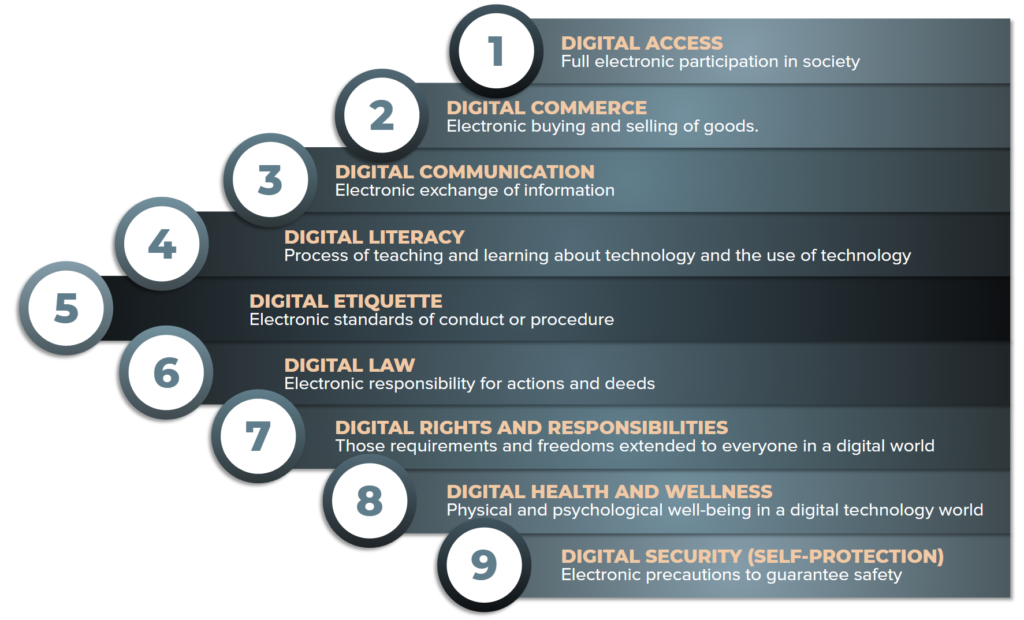The Road Toward Digital Wisdom
I was really inspired by what Marc Prensky (2012) wrote in his collection of essays From Digital Natives to Digital Wisdom. Prensky (2012) called for a change in the way digital natives were taught in schools. He calls the path followed by educators and their students “the road toward ‘digital wisdom'”. Prensky (2012) stresses that digital wisdom “can be, and must be, learned and taught”. He describes digital wisdom as a two-fold concept:
- “Wisdom arising from the use of digital technology to access cognitive power beyond our usual capacity”
- “Wisdom in the use of technology to enhance our innate capabilities.”
As educators, we have a responsibility to practice digital wisdom and impart this to our children. This practice of digital wisdom includes firstly recognizing the need for preparing children for the future by guiding them to learn using new technologies wisely. The operative word here is “wisely”. Merely knowing how to use new technologies does not equate to digital wisdom. Digital wisdom involves the ability to use technology to make more sound judgments and thereby wiser decisions (Prensky, 2012).
Digital Natives vs. Digital Immigrants
Prensky coined the term “digital natives” in 2001 to mean the generation who grew up in the era of ubiquitous technology, including computers and the internet, those born after 1980. The ones born before that era are called “digital immigrants” (that’s me!) – people who had to adopt digital technology later in life, having been born before computers were widespread. It struck me as ironic that the digital immigrants are responsible for leading the digital natives down this road toward “digital wisdom”, especially when it comes to making informed decisions to protect their personal data and curate the digital profile they intend to reflect online. But then again, Albert Einstein captured this sentiment perfectly when he said, “The problems that exist in the world today cannot be solved by the level of thinking that created them.”
Gkioulos et al. (2017) surveyed a group of digital natives born between 1987-1997 to gauge their mobile usage behavior and level of security awareness. The study found that the subjects’ guards towards potential security risks were lowered the more frequently they used their mobile devices. It appears that this habit of daily mobile device usage has increased their confidence which leads to negligent behavior. Another interesting finding is that when it comes to enforcing security measures by these digital natives, ease of access and usability of their mobile devices have trumped security.
A Framework for Digital Citizenship Education
It is under this backdrop that the need for digital citizenship education in schools become more pressing. Putting technology in the hands of students without proper guidance especially on ethical issues may lead to inappropriate use of those technologies.
Ribble (2011) defined digital citizenship as “the norms of appropriate, responsible behavior with regard to technology use.” The author provided a useful framework comprising nine elements for technology leaders to understand digital citizenship and the issues surrounding technology usage. The nine elements are important in helping direct technology users into the appropriate use of technology and avoid misuse and abuse. Following are the 9 elements of digital citizenship presented by Ribble (2011).

Here is a Digital Progression Chart by Mike Ribble which shows how the nine elements come together to form a school technology plan.
Implementing Digital Security Education in Schools
In this post, I’d like to focus on element 9 of the Digital Citizenship Framework on digital security and privacy to specifically address the low awareness of online security risks among digital natives. This covers electronic precautions to guarantee safety online.
McDonough (2019) suggests 5 core basic habits which are practiced by the most secure people to prevent cyberattacks. When practiced consistently, these core habits increase protection for ourselves as well as our families against bad actors and malicious attacks online.
1/ Update devices
It is important to heed device prompts to update our devices. Delaying system updates exposes holes in our devices which increases security risks. It is also good practice to enable automatic updates on our devices to ensure constant protection.
2/ Use two-factor authentication (2FA)
Two-factor authentication is an alternative method for identity verification. The method involves using a secondary device to authenticate our identity on top of our primary method of using a password. Setting up 2FA reduces the risk of data breach as the bad actor cannot penetrate your account even if they got hold of your password as there is still another layer of identity authentication required via a secondary device.
3/ Use a password manager
In a post by password manager, LastPass, it was revealed that the average LastPass user manages 191 passwords! (Steel, 2017). This is probably why users tend to reuse the same passwords or use simple passwords for easy recall, thereby increasing security risks. Using a password manager helps to encrypt passwords while allowing us to unlock multiple passwords using just one simple master password.
4/ Install and update antivirus software
Installing an antivirus program is like having a guard dog watching your home 24/7 and not updating your antivirus is like having the guard dog asleep while burglars break-in. Apart from malware, digital devices connected online are also susceptible to adware and spyware. Therefore it is important to not only install an antivirus program but also ensure that updates are constantly installed.
5/ Back up data
Performing regular data backups ensures that risks like computer crashes, computer theft, hard drive failure, and malware infections will not result in data loss. There is a mistaken belief that storing data in the cloud is unsafe but if the 5 core habits are practiced diligently, these risks can be mitigated. Moreover, the service providers often apply updates to protect from cyberattacks, giving users an extra layer of protection.
Educators can exercise creativity in making digital security education more interesting and appealing for students. Gamification could be a creative method for engaging students in education. Jaffray et al. (2021) proposed the use of a 2D top-down puzzle adventure game called SherLOCKED as a means for educating undergraduate students on cyber security. The authors studied the impact of using SherLOCKED to help students understand lecture materials and increase their confidence in the syllabus. The survey revealed that the majority of students reported improved understanding of lecture content and increased confidence after playing the SherLOCKED game. Even more encouraging is that the students said they were likely to return to the game to help with their revision. These positive findings reinforce the value of gamification in helping students learn better and more effectively (Jaffray et al., 2021).
References
- DC Progression Chart. Digital Citizenship. (n.d.). Retrieved October 16, 2021, from https://www.digitalcitizenship.net/dc-progression-chart.html.
- Gkioulos, V., Wangen, G., Katsikas, S., Kavallieratos, G., & Kotzanikolaou, P. (2017). Security awareness of the digital natives. Information, 8(2), 42. https://doi.org/10.3390/info8020042 (Gkioulos et al., 2017)
- Jaffray, A., Finn, C., & Nurse, J. R. (2021). Sherlocked: A detective-themed serious game for Cyber Security Education. Human Aspects of Information Security and Assurance, 35–45. https://doi.org/10.1007/978-3-030-81111-2_4 (Jaffray et al., 2021)
- McDonough, B.R., 2019. Cyber smart: Five habits to protect your family, money, and identity from cyber criminals, Newark: John Wiley & Sons, Incorporated.
- Prensky, M. (2012). From Digital Natives to Digital Wisdom. In From Digital Natives to Digital Wisdom: Hopeful essays for 21st Century learning (pp. 201–215). essay, Corwin. (Prensky, 2012)
- Ribble, M. (2015). Digital citizenship in schools: Nine elements all students should know. International Society for Technology in Education. (Ribble, 2011)
- Steel, A. (2017, November 1). Lastpass reveals 8 truths about passwords in the new password exposé . The LastPass Blog. Retrieved October 16, 2021, from https://blog.lastpass.com/2017/11/lastpass-reveals-8-truths-about-passwords-in-the-new-password-expose/. (Steel, 2017)


Hi Mun,
I made a good point raising digital security education. I agree that as educators, we have a responsibility to practice digital wisdom and impart this to our students. The Nine Elements of Digital Citizenship by Ribble (2011) provides a clear framework of digital citizenship to deepen teacher’s digital literacies. To add practical tips for identity protection, please read this resource: https://programs.online.utica.edu/resources/article/ten-ways-to-protect-your-identity.
Hi Mun,
Thanks for sharing the 5 core habits that protect yourself and minimize risks online. It is a good reminder for all of us to reflect on the habits that we do have about our online interactions.
I have also been researching about digital citizenship. Thanks for sharing the DC progression chart. I was able to check out the website you linked and found other resources for my own research.
I recommend checking out the digital citizenship curriculum through Common Sense Education. It is a solid curriculum for students in the elementary all the way through high school. They have a positive and a well-balanced approach to teaching the skills students need to navigate the online platform. Come check it out!
https://www.commonsense.org/education/